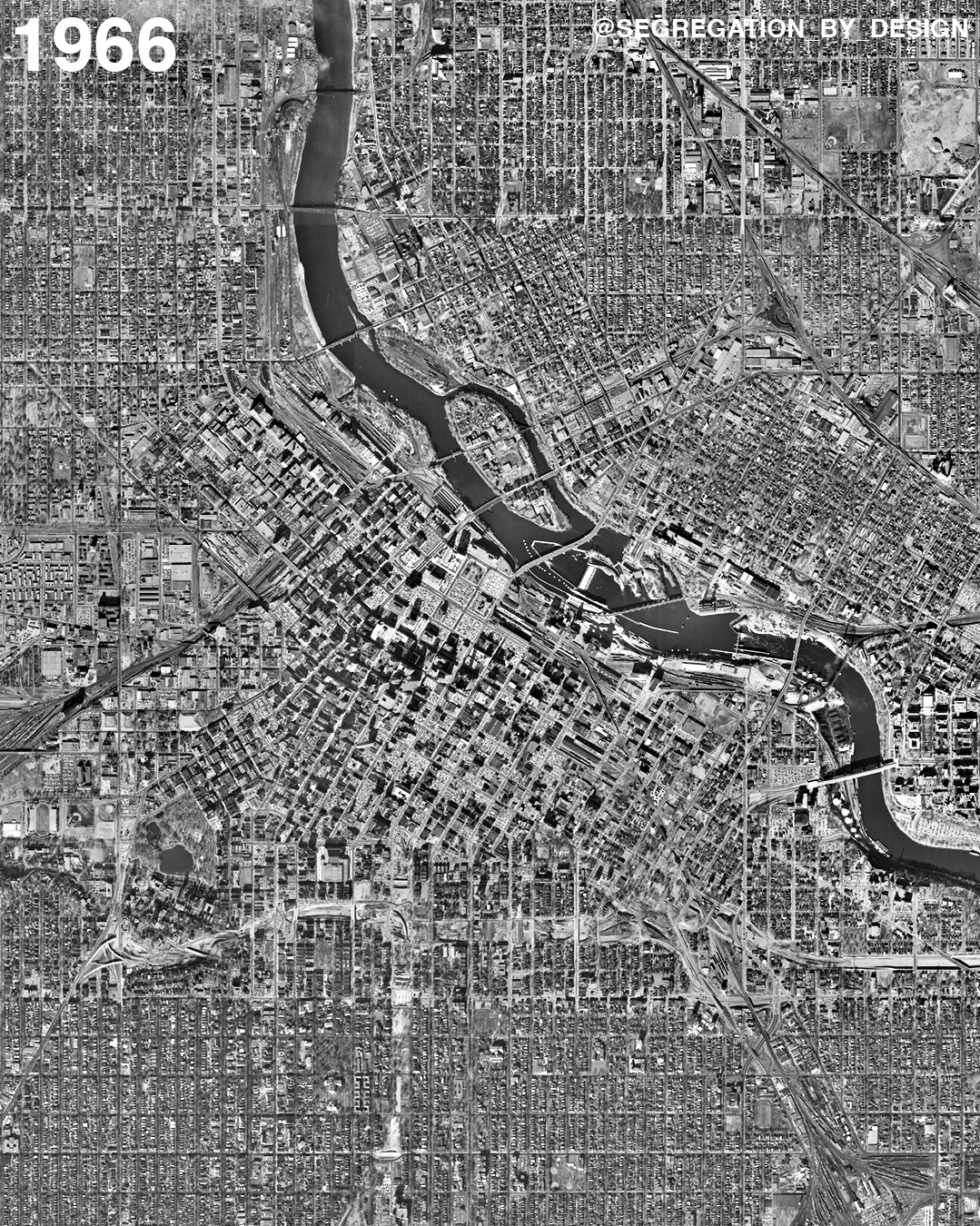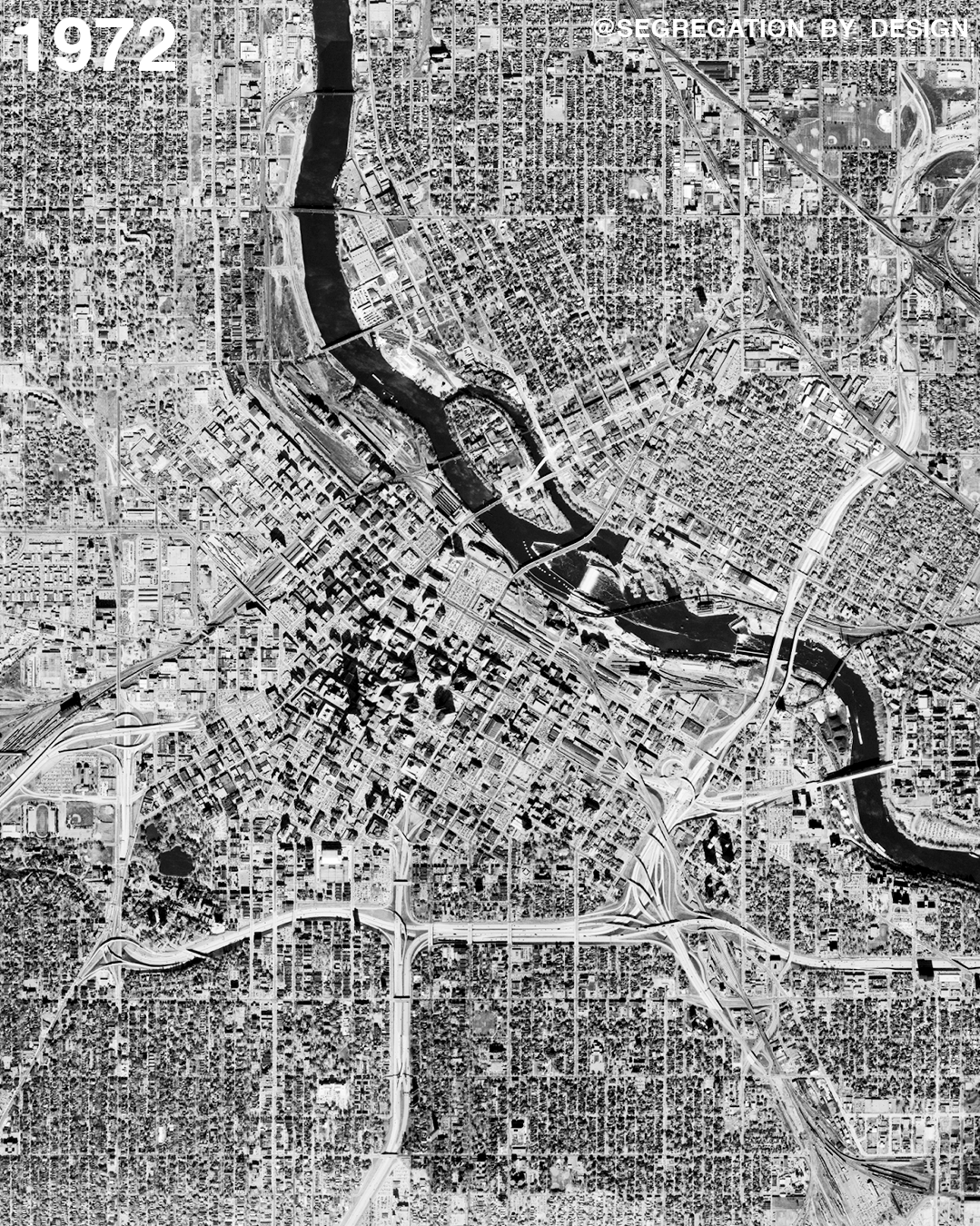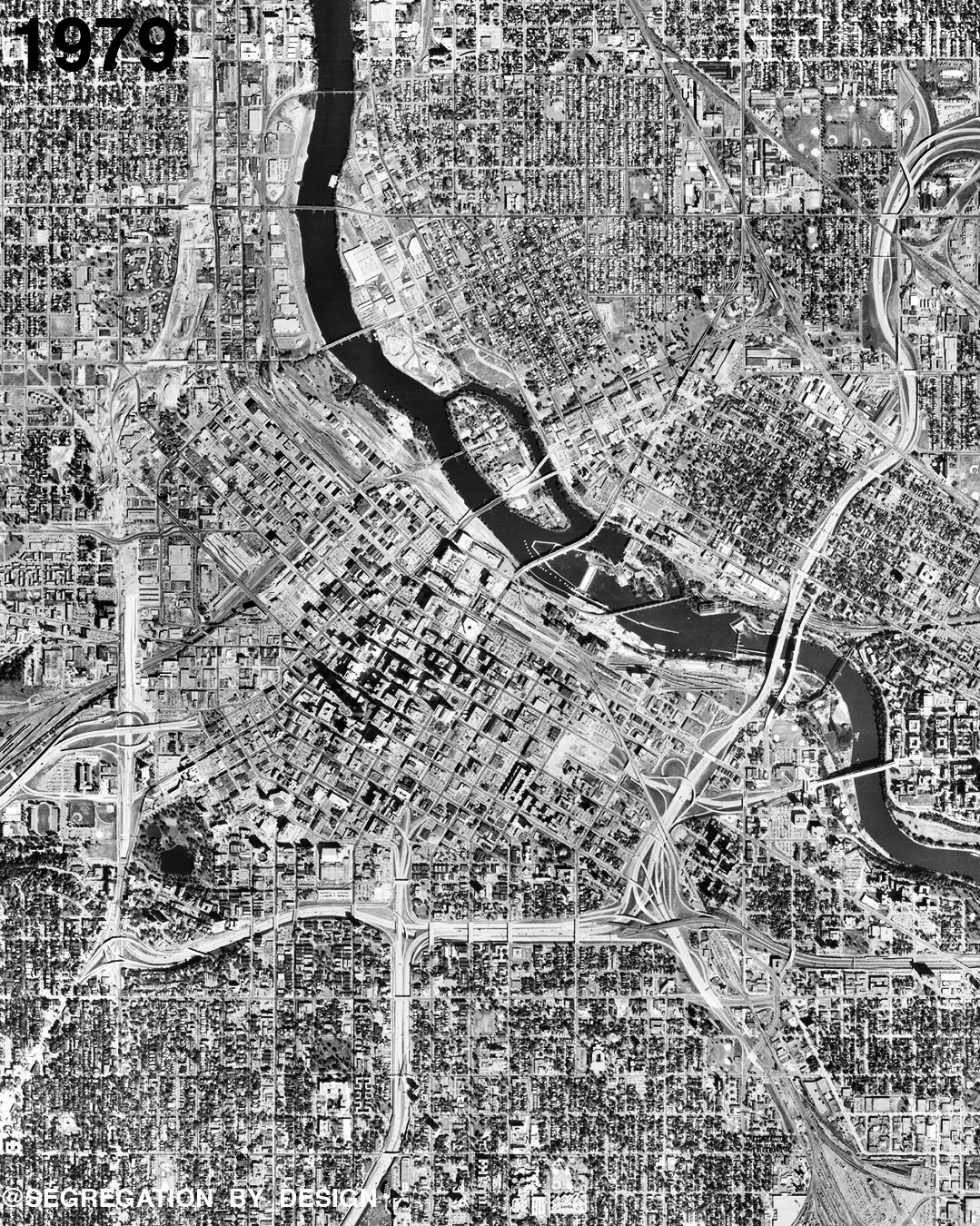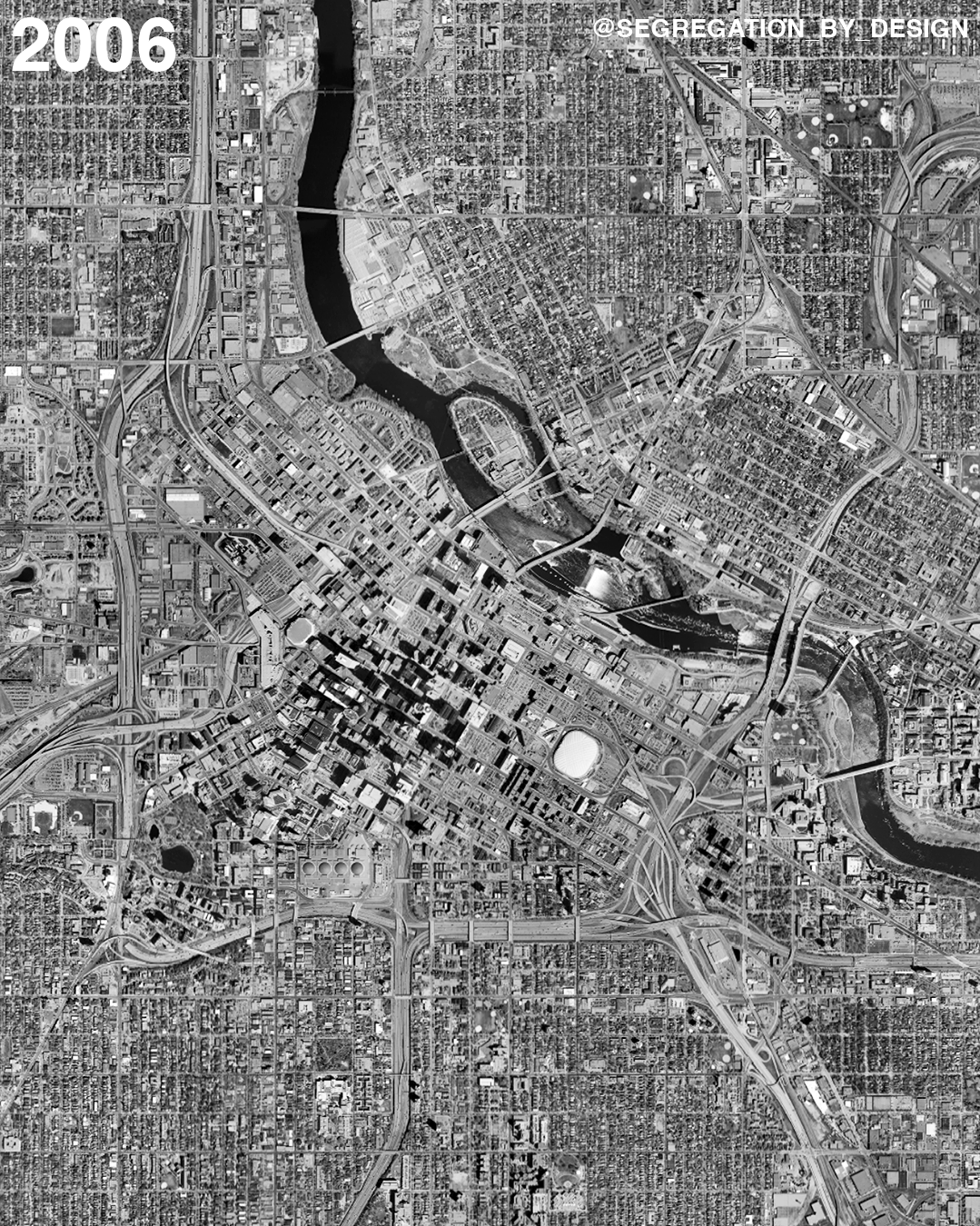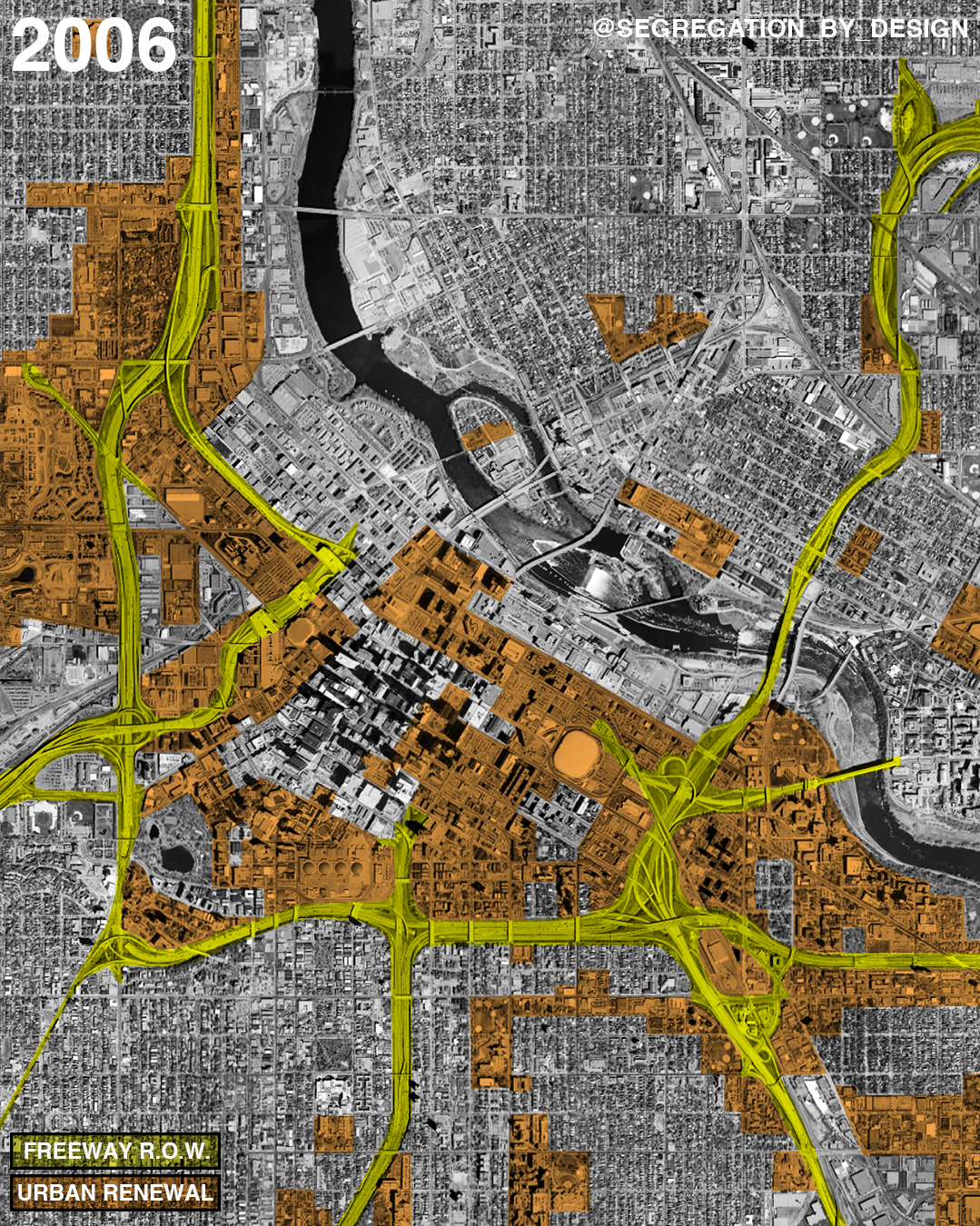MINNEAPOLIS: FREEWAYS & URBAN RENEWAL
Construction of the I-94 displaced over 24,000 people in Minneapolis and over 6,000 in St. Paul in the 1960s. Despite having an only 3% Black population by 1960, 35% of those displaced in Minneapolis were Black. Much of the rest were recent Eastern European immigrants. The highway was routed through neighborhoods containing over 90% of the region’s total Black population, most famously Rondo in St. Paul, home to the largest Black community in Minnesota.
Minneapolis undertook one of the most significant "urban renewal" schemes of any city in the country, demolishing over 7,000 homes and displacing roughly 23,000 people. In the end it had razed roughly 40% of its historical downtown; this included the entirety of the Gateway District, where 25 blocks were completely demolished along with over 200 historical buildings.
Despite having an only 3% nonwhite population by 1960, 35% of those displaced in Minneapolis were people of color. Much of the rest were recent Eastern European immigrants. The original redlining map notes of one the neighborhoods later demolished, "On the west between Lyndale and Humboldt Avenues from Plymouth to the southern boundary of this area, most of the population today is of the poorer class of Jew and colored people." (source: @urichmond)

